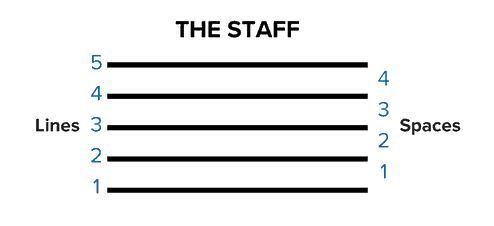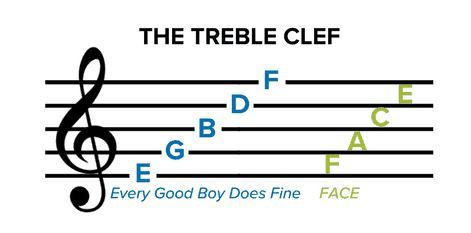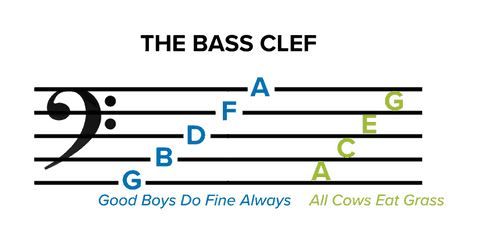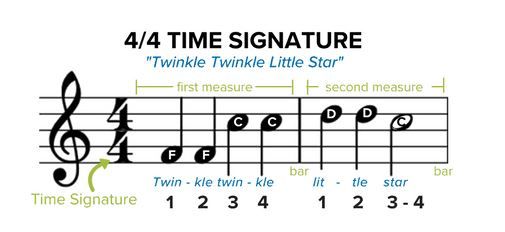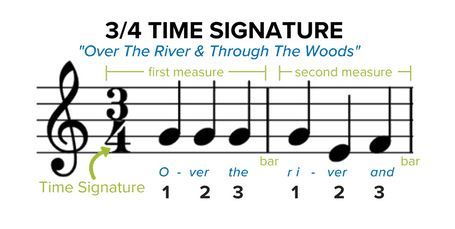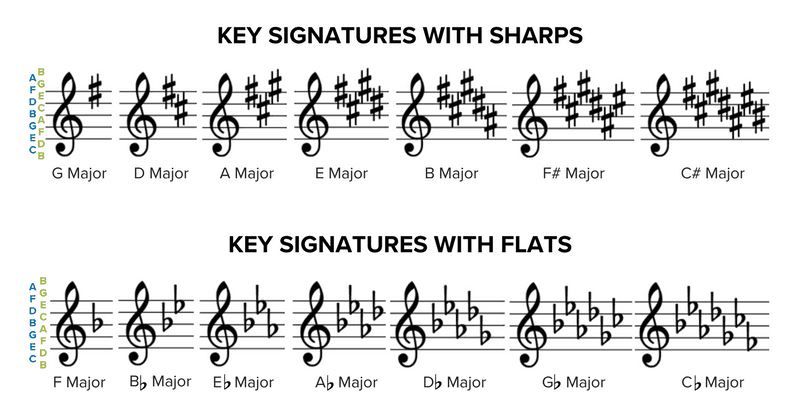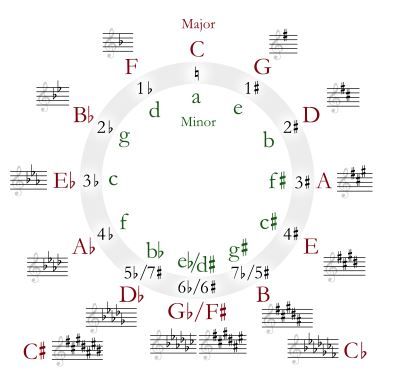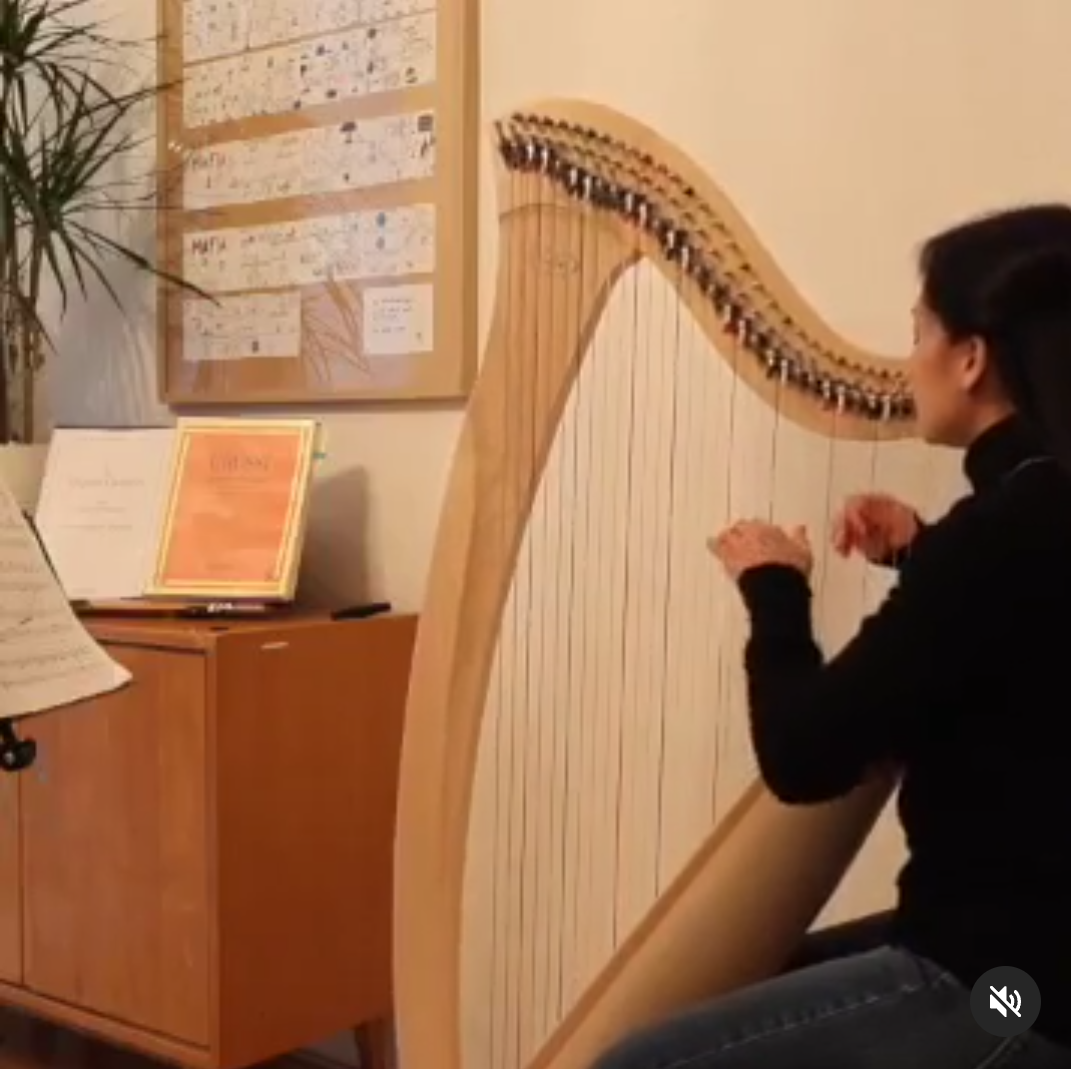Understanding the basic elements of music not only helps us read the pieces of music and play them more easily, but also allows us to appreciate how the music is written.
Contents:
- The Staff
- Note Value
- Time Signature
- Key Signature
- Tempo
- Dynamics
- Harp strings corresponding to a piano keyboard
- The Circle of Fifths
- Minor and Major Keys
- Interval
- Triads
- Inversion
The Staff
The staff consists of five lines and four spaces. Each of these lines and spaces stands for a different letter, which in turn stands for a note.
- Ledger Lines = Short lines that extend the staff; above or below the boundaries
- Examples in treble clef:
- 1st above ledger is A
- 1st down ledger is C (middles C = c1)
- Examples in treble clef:
Note Values
In 4/4 (in the 6/8 time signature --> A dot adds half a beat)
Time Signature (For example: 4/4 or 3/4)
- How many beats in a measure --> Is it 4 beats or 3 beats?
- What note value gets one whole beat --> Do 4 notes make a whole note or 3 notes make a whole note?
Key Signature
- Name of Key: Letter order after C
- Key changes: Letter order from the beginning
- Order of sharps (#): F_C_G_D_A_E_B (Father Charlie Goes Down And Ends Battle)
- D Sharp (order after C: G_D) has 2 flats (order of sharps: F#_C#)
- 2 sharps = (CG) D Sharp = F# and C#
- Order of flats (b): B_E_A_D_G_C_F (Battle Ends And Down Goes Charlie’s Father)
- E flat (Order after C: F_B_E) has 3 flats (Order of flat: Bb_Eb_Ab)
- 3 flsts = (CFB) E Flat = Bb, Eb and Ab
Tempo
The tempo indicates how fast or slow a piece should be played.
- Example: a tempo of 60 BPM (beats per minute) means that we play 60 of the designated notes per minute (= one note per second)
Dynamics
Dynamics decide how loud or soft a piece of music is played and can completely change the sound.
Harp strings corresponding to a piano keyboard
- Red = C
- Black/Blue = F
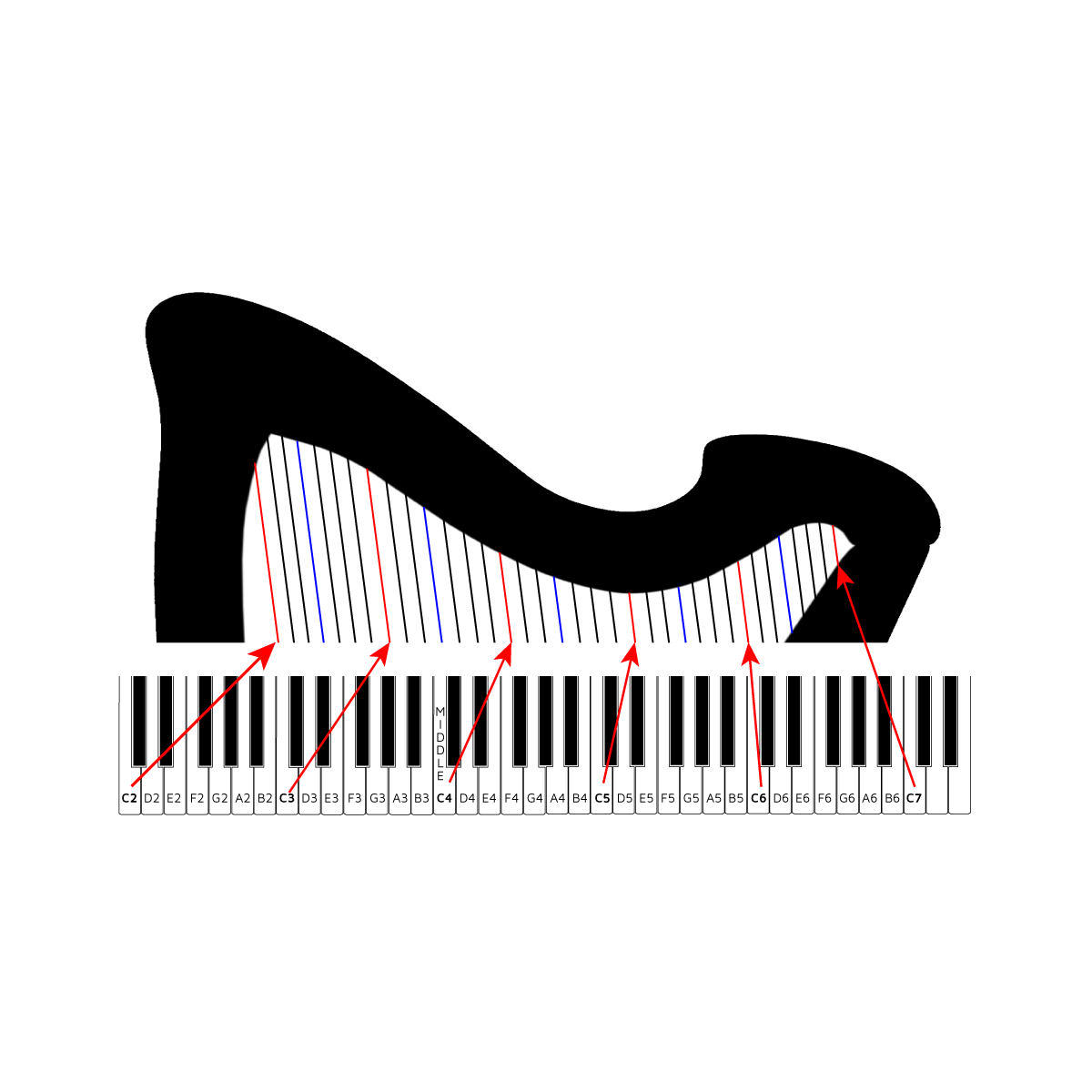
The Circle of Fifths
The circle of fifths shows the relationships between the twelve notes of the chromatic scale, their corresponding key signatures and the associated major and minor keys (by an interval of fifths)
The key signature C does not have a key signature. It starts from C forward (sharp) or backward (flat)
- The key signature with 1 sharp is G
- The key signature with 2 sharps is D …
- The key signature with 1 flat is F
- The key signature with 2 flats is B …
Minor Keys
Finding relative minor keys by going down a third from the major key.
- Examples:
- A-minor is the relative key of C-major
- E-minor is the relative key of G-major
Intervals
An interval is a distance between two notes.
Each interval has a quality (major or minor) and a number (e.g. m7, M3)
Finding Major and Minor Intervals:
To find the quality of an interval: (1) Decide the key signature = the bottom note
- Examples (see picture):
- Interval between C and E is a major 3 (M3)
The key signature C is Natural and is also followed by E Natural = Major - Interval between D and F is a minor 3 (m3)
The key signature D has 2 sharps (Fis, Cis), which means it is followed by F sharps ≠ F Natural = minor - Internal between E and G is a minor 3 (m3)
The key signature E has 4 sharps (Fis, Cis, Gis, Dis), which means it is followed by G Sharp ≠ G Natural = minor - Interval Between F and A is Major 3 (M3)
The key signature F has 1 flat (As), which means it is also followed by A Natural = Major - Interval between G and B is Major 3 (M3)
The key signature G has 1 sharp (Fis), which means it is also followed by B Natural = Major - Interval Between A and C is minor 3 (m3)
The key signature A has 3 sharps (Fis, Cis, Gis), which means it is also followed by C sharp ≠ C natural = minor - Interval between B and D is minor 3 (m3)
The key signature B has 5 sharps (Fis, Cis, Gis, Dis, Ais), which means it is also followed by Dis ≠ D Natural = minor - Interval between C and A is M6 (a major sixth =CM6)
- Interval Between G and F is m7 (a minor seventh = Gm7)
- Interval between E and F is m2 (a minor second = Em2)
- Interval between C and E is a major 3 (M3)
Finding Intervals at the harp (both number and quality)
- Always count the bottom note (= the key signature)
- Hear the sound!
- G and F has 7 intervals and G has 1 flat (Fis) ≠F natural = a minor seventh = Gm7
Major and minor scales - Finding relative minor keys by going down a third from the major key, for example, E-Minor is the key relative to G Major
- E-Minor: E_F#_G_A_B_C_D_E
- G-Major: G_A_B_C_D_E_F#
2 different minor scales:
- Harmonic Minor Scale raises the 7th scale degree of the natural minor scale
- E Minor Scale: E_F#_G_A_B_C_D_E à raise the D to D#
- Harmonic E-Minor Scale: E_F#_G_A_B_C_D#_E
- Melodic Minor Scale raises the 6th and 7thscale degree of natural minor scale and lowers the 6th and 7th scale degrees going down the melodic minor scale.
- E-Minor: E_F#_G_A_B_C_D_E à
- Ascending of Melodic E-Minor Scale: E_F#_G_A_B_C#_D#_E
- Descending of Melodic E-minor Scale: E_F#_G_A_B_C_D_E
Triads
A triad is a 3-note chord, notes stacked on top of each other (= snowman)
- Major triads all built with M3 on the bottom and m3 on top (C_E_G)
- Minor triads all built with m3 on the bottom and M3 on top (B_Eb_G)
- Diminished triads built with m3 on the botton and m3 on top (C-Eb_Gb)
- Augmented triads built with M3 on the bottom and M3 on top (C_E_G#)

Inversion
CEG (Root/Grundstellung) --> EGC (1st inversion/1. Umkehrung) --> GCE (2nd inversion/2. Umkehrung) --> CEG (Root/Grundstellung)
- A root position triad is a 3-note chord, and notes are stacked on top of each other in thirds (either Spaces or Lines)
- 1st inversion takes bottom note of root position, put it on the top of the chord
- 2nd inversion takes bottom note of 1st inversion, put it on the top of the chord
- Back to the root position, if I take the bottom note of 2nd inversion, put it on the top of the chord
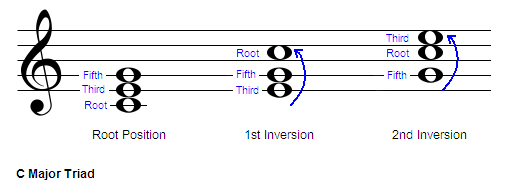
Resources:
- Harp Column Academy - Music Theory for Harpist by Angelica Hairston
- Musicnotes.com
- HelloMusicTheory
- Harpkit
- Circle of Fifths
- Harmony/First Inversions
- The feature image by Kids.Britannica.com
(Last reviewed: 11 June 2022)


